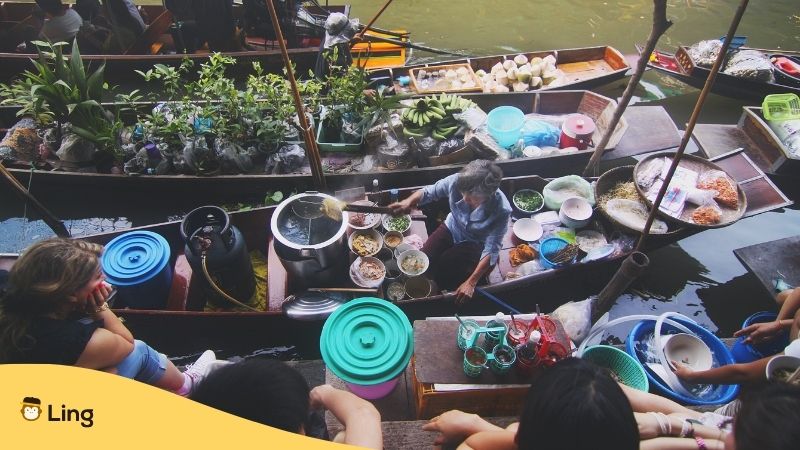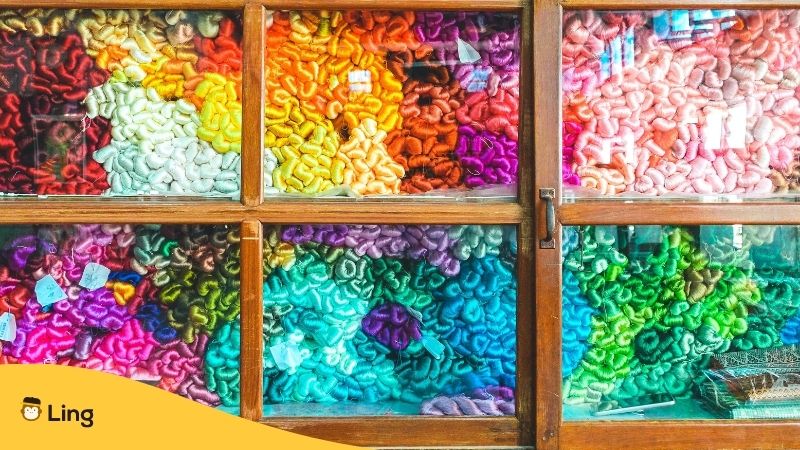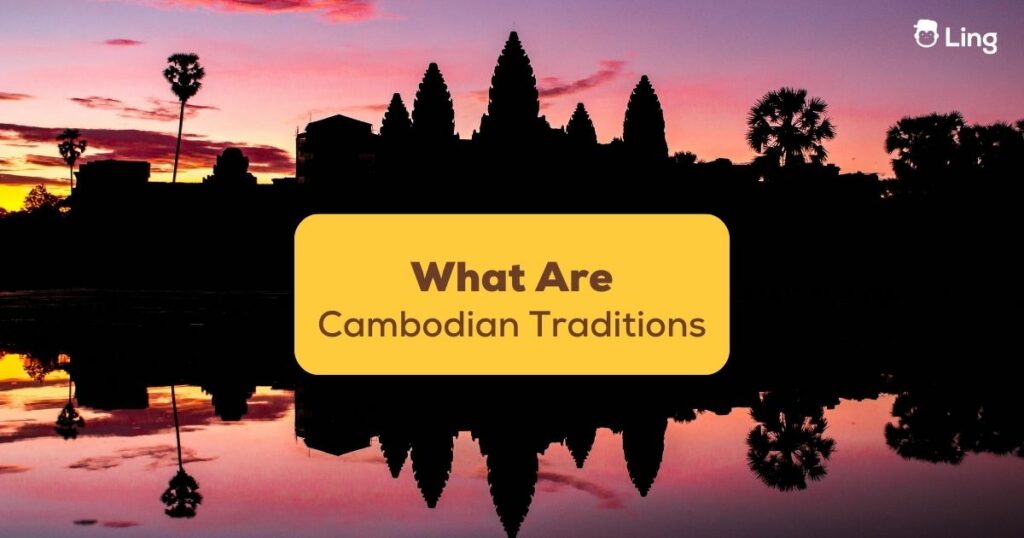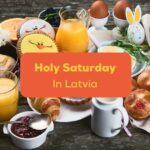Any visitor to Cambodia will quickly realize that it is a country with a rich cultural heritage, but what are Cambodian traditions, and why is traditional Cambodian culture so deeply rooted in its history and religion? In this blog, we will delve into Khmer culture, from the wedding traditions to the colorful Khmer arts and delicious Khmer cuisine. Let’s go!
Ready to take your Khmer language skills to the next level? Then get ready to dive into the fascinating world of Cambodian culture and traditions! By learning about the customs and beliefs that shape the Khmer language, you’ll gain a deeper understanding of its nuances and subtleties. Plus, you’ll discover a vibrant cultural heritage that will captivate your imagination and inspire your learning journey. From colorful festivals to traditional dances and cuisine, there’s no shortage of fascinating topics to explore when it comes to Cambodian traditions.
But it’s not just about academic learning – delving into Cambodian culture is also a fun and rewarding way to connect with locals and make new friends. Whether exploring a bustling market, trying your hand at a traditional craft, or sampling delicious street food, you’ll be immersing yourself in Cambodia’s sights, sounds, and flavors in a way that will leave a lasting impression. Let’s go over more about this topic in the sections below!
Cambodian Traditions
Traditional Greetings
Before diving into Cambodian traditions, let’s learn the traditional greeting or Sampeah. Although it is becoming more common to shake hands with someone when you meet them, you are far more likely to impress the Cambodians you meet if you employ the Sampeah. This involves placing the palms of your hands together in front of your chest, giving a slight bow, and saying, “chum reap suor.” You can move your hands further up and lower the bow depending on how much respect you wish to convey. Don’t overdo it, though!
| English | Khmer | Pronunciation | Context |
|---|---|---|---|
| Hello | សួស្តី | Soo-duy | General greeting that can be used any time of day |
| Good morning | អរុណសួស្តី | Aroun suostei | Greeting that’s mainly used from sunrise until noon |
| Good afternoon | អរុណសួស្តី | Aroun suostei | Greeting that’s used from noon until sunset |
| Good evening | រាត្រីសួស្តី | Reatrei suostei | Greeting that’s mainly used from sunset until bedtime |
| Good day | ថ្ងៃល្អ | Thngai l | Common greeting that’s regularly used at any time of day |

Religious Traditions
Cambodian traditions are heavily influenced by religion, with many customs and practices reflecting the dominant faith of Theravada Buddhism. Monks and nuns play a significant role in Cambodian society, and giving alms to monks is common in many communities. Every morning, monks walk through the streets accepting food offerings from the faithful, a way to accumulate merit and earn a better rebirth in the next life.
Another tradition that reflects the influence of Buddhism is the Cambodian New Year celebration, known as Chol Chnam Thmey. This festival lasts for three days in mid-April and is considered a time to make offerings to ancestors and to seek blessings from monks. During the festival, Cambodians visit temples to perform religious rituals, play traditional games, and participate in processions.
Khmer Wedding Traditions
Weddings are one of the most important events for the Khmer family, steeped in ancient traditions and customs. The wedding ceremony typically lasts three days, and it is a time for the Khmer family members of the bride and groom to come together and celebrate. Here’s how traditional Cambodian weddings usually go:
- First day: The groom’s family visits the bride’s home with gifts of food, fruit, and sweetmeats. The bride’s family prepares a lavish feast for the guests, and the couple exchanges rings and blessings from the Buddhist monks.
- Second day: The couple is married in a traditional Buddhist ceremony, which involves chanting, blessings, and offerings to the Buddha.
- Third day: The newlyweds visit their respective families and receive blessings.
New Year Celebrations
Cambodia celebrates its New Year in mid-April, and it is a time for family members to come together, pay respect to their ancestors, and enjoy traditional games and festivities. The celebrations last three days, each with unique customs and traditions.
On the first day, Cambodians visit their local pagodas to make offerings to the Buddhist monks and receive blessings. The second day is for families to gather and enjoy traditional games, such as tug-of-war and chasing each other with water. The third day is a time for paying respects to ancestors by cleaning and decorating their graves.
Traditional Khmer Dance And Music
Cambodian classical dance and music are renowned for their grace and beauty, and one can’t say one has experienced Cambodian culture unless one has seen a traditional dance performance. The dance is called “Robam Apsara” and is said to have been inspired by the many Apsara carvings in the temples of Angkor Wat near Siem Reap. This classical dance is performed by skilled dancers who wear intricate costumes and delicate headdresses. Apsara means celestial dancer, and these traditional dances have been an integral part of traditional Khmer society for more than a millennium and even managed to survive the Khmer Rouge period when it was outlawed.
The music is performed using traditional instruments such as the Khloy (bamboo flute), Chapey (two-stringed guitar), and Tro (drum). The music is often accompanied by traditional singing, which tells stories of love, war, and nature.
Traditional Khmer Cuisine
Cambodian cuisine is a blend of flavors and influences from the neighboring mainland southeast Asia countries of Thailand and Vietnam, as well as its unique traditions. Some of the most popular dishes include Amok (a steamed fish curry), Lok Lak (a beef stir-fry), and Nom Banh Chok (a rice noodle soup).
One of the most important aspects of Cambodian food culture is sharing. Meals are often served family-style, with large plates of food in the center of the table for everyone to share. It is also customary to offer food to guests and visitors as a sign of hospitality and respect. Food is such an essential part of Cambodian community life that it is never too long before the next meal is served.
Cambodian Silk Weaving

Silk weaving is one of the ancient Khmer arts practiced throughout the Khmer republic from Phnom Penh to Siem Reap. Today, it is mainly practiced in rural Cambodia. The silk is hand-woven using traditional techniques, and nature often inspires the patterns and colors. The silk is used to make traditional clothing, such as the Sampot (a traditional skirt) and Krama (a traditional scarf). The process of silk weaving is time-consuming and intricate, and it is often passed down from generation to generation.
Learn Khmer With Ling

In this blog, we have merely scratched the surface of Cambodian traditions. Want to learn more? An easy way to delve deeper is to download the Ling app. Ling is an excellent resource for language learners interested in genuinely mastering Khmer and 60+ other languages! Aside from its range of in-depth lesson guides and gamified features, it also publishes several blog posts per week that will help you increase your Khmer vocabulary.
Ready to try it out? Visit Google Play or App Store and download Ling to start learning.































